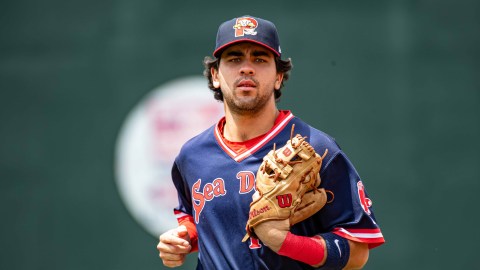With each formal signing, the latest being that of left-hander Hideki Okajima, the Red Sox’ payroll picture becomes a bit clearer.
According to reports, Okajima will make a guaranteed $1.75 million in 2011 with incentives increasing his salary to as high as $2.3 million. After adding in about $12.5 million total for arbitration-eligible players Jonathan Papelbon and Jacoby Ellsbury and roughly $2 million for pre-arbitration eligible guys (Daniel Bard, Jed Lowrie, Clay Buchholz, Darnell McDonald) to the current payroll of nearly $150 million, it is evident that the product that hits the field on April 1 could be the priciest in team history, eclipsing that of last season.
Adding in ancillary items such as medical benefits, MLB regulations that utilize multi-year players’ average annual value as opposed to a single-year salary for luxury tax purposes, bonuses and incentives, and the distinct possibility of in-season roster upgrades, at a cost, and the club could power past the $178 million luxury tax threshold without an issue. That would mark the sixth year overall and the second in a row that the organization has gone beyond that mark. When a team does so two straight seasons, it is taxed at a rate of 30 percent on anything it spends beyond the threshold.
For Boston, which could pay out beyond $180 million when it is all said and done, that means a luxury tax payment in the same ballpark as last year’s $1.487 million payout.
This is obviously a fluid situation. There is more than a month before pitchers and catchers report and more roster moves could still surface. A cost-cutting maneuver that could help the team steer below the tax line would be to unload a pricey veteran such as Daisuke Matsuzaka (if he waived a no-trade clause) or Marco Scutaro, for example.
Boston’s 2010 payroll as reflected by the Competitive Balance Tax (CBT) was $176,609,550, second to the New York Yankees’ $215,074,134. The threshold was $170 million and the Red Sox were taxed at a 22.5 percent rate for their overflow.
New York general manager Brian Cashman has indicated that the Yanks, who failed in their pursuit of free-agent lefty Cliff Lee and missed out on new Red Sox left fielder Carl Crawford, will have a lower CBT figure than in 2010. It could drop even lower than their 2005 payroll, the first that saw the organization soar past the $200-million mark. Still, New York will be taxed at a 40 percent rate beyond the $178 million figure in 2011, which will be their ninth year getting levied since the revenue-sharing scheme was enacted nine years ago.
The Yanks essentially broke from the pack just before that alteration in the baseball’s salary structure (they and the Red Sox were just about $2 million apart as late as 2001, but over $80 million apart in ’05). The Sox have been drawing a bit nearer over the last two years. Their spending spree this winter proves that they are willing to close the gap, pay the tax and perhaps someday soon be on par with the Bronx Bombers.
At the very least, in 2011, Boston figures to be spending as much or more on its bullpen than New York, which has Mariano Rivera at $15 million, Damaso Marte at $4 million and a whole host of arbitration- and pre-arbitration eligible (i.e., cheap) arms filling out the ranks.
While Okajima is just a drop in the sizable bucket, he represents a portion of one unit that will take on its fair share of the payouts for Boston. The projected bullpen of Okajima, Papelbon, Bard, Bobby Jenks, Dan Wheeler, Scott Atchison and Tim Wakefield should cost over $26 million. Last year’s inconsistent grouping took home under $20 million, and nearly $4 million was allotted to Wakefield, who spent more than half of the year in the starting rotation. Cut out half of Wakefield’s figure last year and there is an increase of about 50 percent in bullpen payroll from 2010 to 2011. Papelbon’s projected raise to $12 million or so and Jenks’ $6 million tag represent the bulk of it.
The cost of bullpens went up league-wide and Boston’s bump in that area doesn’t signal much more than a concerted effort to improve the one area in which it struggled in 2010, rather than a bid to outspend the Yankees. However, with each signing in a generous offseason, the Sox are showing a willingness to get pretty close.



